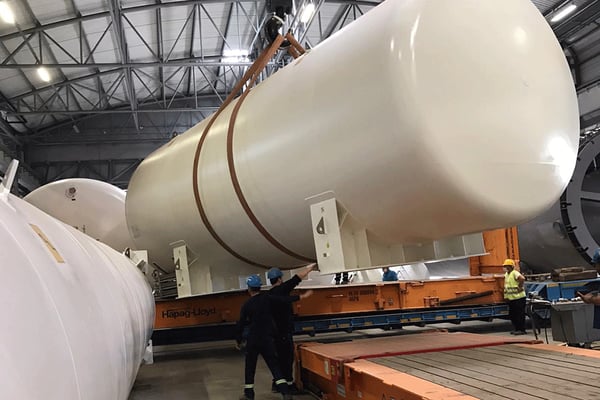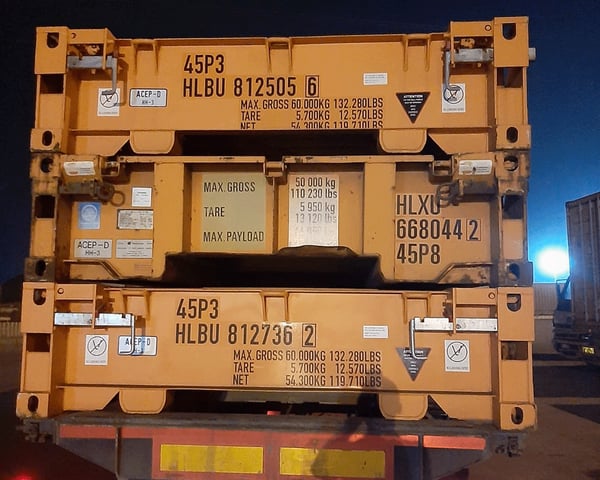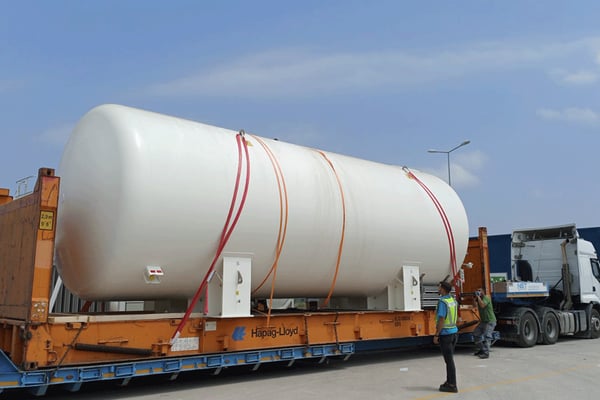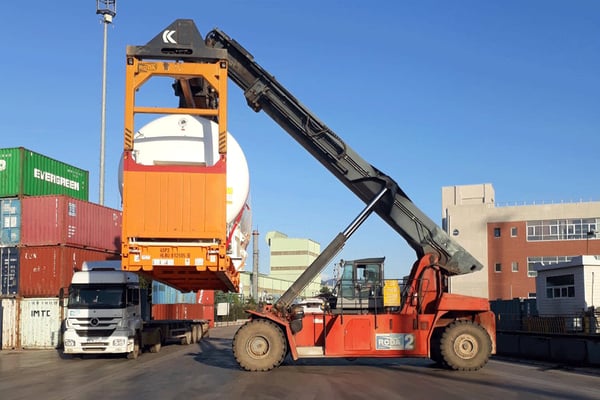Relationships & Experience Help Save Customer Money in Global Project Shipment
Well-established relationships with global shipping partners and decades of experience proved key in cost-savings for a global energy provider.
About CLEANCOR
CLEANCOR designs solutions for cleaner fuel alternatives used to fuel trucking and municipal fleets and to power industrial operations. They strive to provide quick solutions with a trailer-mounted liquefied natural gas (LNG) fleet that can provide fuel wherever it’s needed.
The Challenge
CLEANCOR needed six horizontal LNG storage tanks — weighing roughly 50,000 pounds each — to be delivered to their facility in Long Beach, California.
The tanks were manufactured in the inland city of Balikesir in western Turkey. Working with a specific budget and limited knowledge of international shipping, CLEANCOR was looking for an international freight forwarder with the knowledge and expertise to properly execute a global shipment in the most cost-effective way.
When the “Normal” Way Didn’t Work

When shipping cargo the size of the 16,000-gallon storage tanks — measuring at 11 feet, 2 inches wide and 12 feet, 10 inches tall — most international freight forwarders would choose to use mafi trailers and roll-on/roll-off (Ro/Ro) vessels.
Once the cargo arrives at the port of origin, mafi trailers provide a seamless solution to load directly onto a Ro/Ro vessel, reducing risk of damage due to loading from equipment to equipment.
However, the closest port to Balikesir that accommodates Ro/Ro vessels was roughly 200 km away, which greatly increased the cost of inland transport. That led to the quotes coming back higher than expected for CLEANCOR, so they requested a different solution that could help them reduce transportation costs.
Innovative Solutions Lead to Cost Savings
In collaboration with its well-established partner agents in Turkey, ATS International found a solution that fit within CLEANCOR’s budget.

Standard container shipping is the most common form of international shipping equipment, which makes it more affordable than the less common methods. There was also a port — the Port of Gemlik — that accommodated containers much closer than the Ro/Ro port was.
But because the tanks were OOG, a container wasn’t an option. So ATS International used the next-best thing — a 40-foot flatrack container, which happens to ship out of container ports using container vessels.
Using a flatrack presented yet another challenge. Typically flatracks are only used to move cargoes around within or near a port — usually 25-50 km outside of a port, maximum.
When using flatracks, it’s common to transport cargo on inland equipment that specializes in transporting over-dimensional (OD) freight — like removable gooseneck (RGN) trailers.
But, ATS International wanted to reduce the risk of damage, if possible. Together with their partner agent, they were able to bring six flatracks to the shipper’s facility in Balikesir — which happens to be roughly 165 km from the Port of Gemlik.
Every Detail Counts

In order to ensure proper securement, ATS International hired a certified port labor gang to go to the Balikesir facility. While facility workers are used to securing freight to inland-style trailers, they weren’t experts in proper cargo lashing like the port gang was.
Because of the port gang’s expertise in lashing, they were much more efficient in loading the cargo. What would normally take about five or six days to load took about two, which helped save CLEANCOR money on labor.
After being properly lashed for ocean transit, the partner carrier loaded the flatracks onto low-profile trailers for inland transit. This was important because the storage tanks were 12 feet, 10 inches tall on their own. Staying around 14 feet tall, including the trailer height, was a big deal because it’s a height that allows greater route flexibility and, therefore, reduces costs. That allowed the partner carrier to safely and efficiently transport the six loaded flatracks to the Port of Gemlik.

Once at the port, the storage tanks needed to be loaded onto the ocean vessel. Using a standard reach stacker wouldn’t work because the tanks were taller than the support posts that a standard reach stacker would grab onto. So over-height frames were used to safely lift the flatracks onto the ocean vessel without causing damage to the units.
Accommodating the Consignee’s Needs
From a cost standpoint, shipping all six storage tanks as one lot over the ocean made the most sense. But because the consignee was only able to take one tank at a time from a storage and manpower standpoint, ATS International found a nearby storage facility to house the tanks until the consignee was ready for them.
As mentioned earlier, it’s uncommon for flatracks to leave the port. That was the case once they arrived in California. Once the ocean vessel arrived at the Port of Long Beach, ATS International arranged to have six expandable multi-axle RGNs staged at the port for seamless discharging.
Working with a carrier to manage final mile delivery, the tanks were delivered to a nearby warehouse for storage. That’s where they sat until the consignee could take them to their facility, one at a time.
Global Relationships That Benefited the Customer
In the end, CLEANCOR had some unique requests that didn’t fit the “status quo” of shipping options. Thanks to well-established global partnerships, ATS International was able to come up with creative shipping solutions — even if it wasn’t being transported on their equipment. These creative solutions ultimately fit the customer’s requirements while saving them money in the process.
About ATS International
Whether you’re moving one component or major project cargo, ATS International has the resources necessary to get the job done. Whether your project cargo needs full charter, part charter or liner service, we’ll ensure it’s paired with the right vessel to get to its destination on time.
